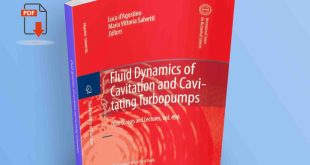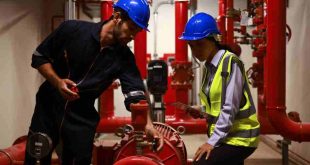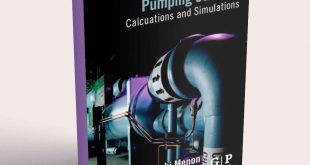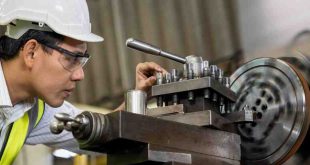Predictive Maintenance of Pumps Using Condition Monitoring
Predictive maintenance (PdM) is a crucial strategy in modern industrial operations, particularly for equipment like pumps that are essential for various processes. By utilizing condition monitoring techniques, predictive maintenance helps to forecast potential failures, optimize maintenance schedules, and reduce operational costs. This article delves into how condition monitoring is applied to pump systems to enhance their performance and reliability, with a focus on different monitoring techniques, performance analysis, and case studies of pump maintenance.
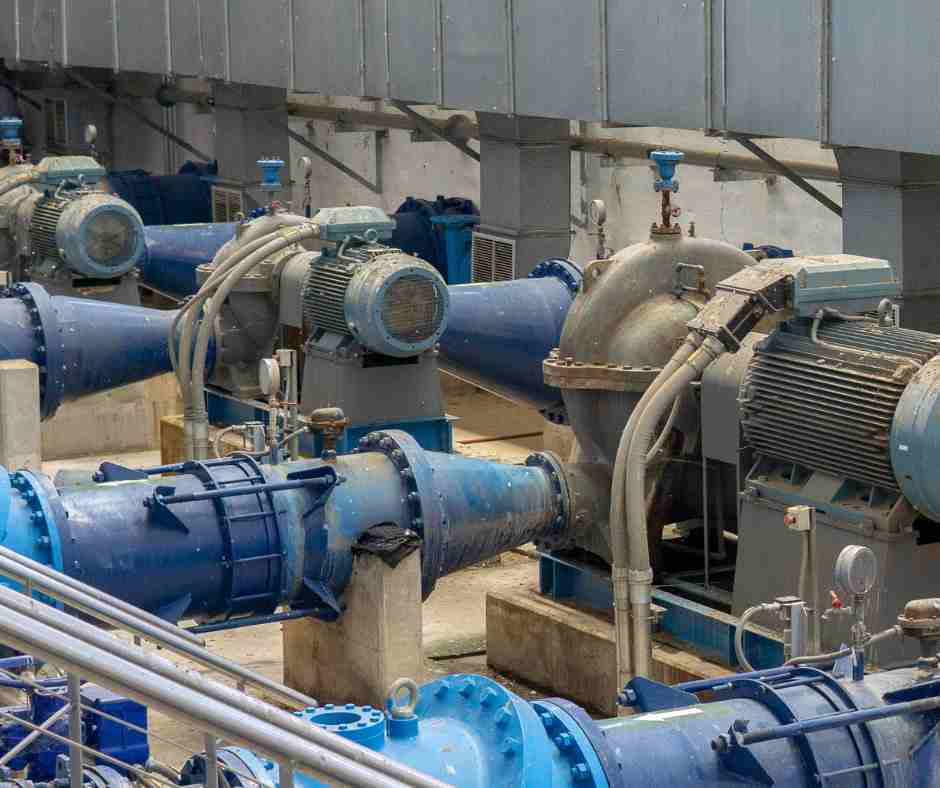
Table of Contents
ToggleCondition Monitoring and Its Role in Maintenance
Condition monitoring is the process of continuously or periodically checking the health of machinery and equipment to detect early signs of wear, damage, or malfunction. In the context of pumps, condition monitoring helps identify issues such as imbalance, misalignment, cavitation, and wear that could lead to failure if left unaddressed. The key advantage of condition monitoring is that it enables maintenance teams to schedule interventions before a problem causes unplanned downtime, ensuring more efficient and cost-effective operations.
Predictive maintenance goes beyond traditional reactive maintenance (which waits for failures) or preventive maintenance (which adheres to a fixed schedule) by using real-time data from condition monitoring systems to predict when maintenance actions are needed. This allows for the optimization of maintenance schedules and resource allocation.
Pump Performance and the Effect of Wear
Pumps experience various types of wear over time, particularly due to factors like abrasives in the fluid, corrosion, or mechanical wear from continuous operation. Wear and tear can degrade a pump’s performance, leading to reduced efficiency, increased energy consumption, and, ultimately, failure. Monitoring a pump’s performance is critical for detecting wear before it leads to significant issues.
Key indicators of wear include:
Flow Rate Decrease: A decrease in the flow rate may indicate wear in internal components, such as the impeller or seals.
Increased Vibration: Wear in components can lead to unbalanced operation, resulting in higher vibration levels.
Power Consumption: An increase in power consumption without an increase in workload may point to inefficiencies caused by internal wear.
Condition monitoring systems can detect these signs early, helping to predict when the pump will need maintenance, thereby preventing failures and optimizing pump life.
Performance Analysis and Testing of Pumps for Condition Monitoring
Performance analysis is at the heart of condition monitoring, and it plays a critical role in identifying the state of a pump. Various methods are employed to analyze pump performance, such as measuring flow rates, pressures, vibrations, temperatures, and power consumption.
Basic Performance Testing
Basic performance testing for pumps often involves measuring the following:
Flow Rate: Comparing the current flow rate to design specifications can reveal issues like clogging or internal wear.
Head Pressure: Monitoring head pressure ensures that the pump is operating efficiently and effectively.
Power Consumption: Checking the pump’s power consumption against normal operating levels can indicate a performance drop.
Advanced Performance Testing
Advanced performance analysis involves using more complex instrumentation and techniques, such as:
Pump Efficiency Curves: Evaluating the efficiency curves for the pump helps identify if it’s operating within the optimal efficiency range.
System Analysis: Evaluating the entire pumping system, including piping, valves, and other components, to identify the cause of poor performance.
Performance Analysis and Its Application to Optimize Time for an Overhaul
One of the most significant benefits of performance analysis is its ability to optimize the timing of pump overhauls. By continuously monitoring key performance metrics, engineers can identify when a pump is approaching the point where it will require significant maintenance or overhaul, thus avoiding unnecessary downtime.
By integrating performance analysis into the maintenance strategy, organizations can:
Extend Pump Life: By addressing issues early, pump life can be extended, reducing the frequency of full overhauls.
Optimize Maintenance Schedules: Maintenance can be performed just in time, ensuring that pumps are not taken offline prematurely but also avoiding last-minute emergency repairs.
Improve Resource Allocation: Performance analysis allows for the allocation of resources based on the actual condition of equipment, reducing unnecessary repairs and downtime.
Other Methods of Performance Analysis for Pump Condition Monitoring
In addition to basic and advanced performance testing, several other methods can be used to monitor the condition of pumps. Some of these methods include:
Pressure and Flow Measurement: Continually measuring the pressure and flow can help detect issues like blockages, cavitation, or impeller damage.
Temperature Monitoring: Overheating of the pump can indicate issues like friction, mechanical failure, or a blocked cooling system. Temperature monitoring allows for early detection of such problems.
Oil Analysis: In some pumps, lubricants are used to reduce friction and wear. Analyzing the oil can reveal contamination or degradation of internal components.
Acoustic Emission: Using microphones to listen for abnormal sounds can help detect problems such as cavitation or internal damage.
Each of these methods provides valuable insights into the pump’s health and can be used in conjunction with other techniques for a more comprehensive condition monitoring strategy.
Vibration Analysis of Pumps – Basic
Vibration analysis is one of the most effective and widely used methods for pump condition monitoring. Pumps often exhibit specific vibration patterns that can indicate the health of their internal components. Basic vibration analysis involves measuring vibrations at different points on the pump system and comparing them to baseline readings. These vibrations are then analyzed for anomalies.
Common causes of abnormal vibrations include:
Imbalance: Imbalance in the rotating components, such as the impeller or motor shaft, leads to increased vibration.
Misalignment: Misalignment between the pump and motor shafts can also cause excessive vibration.
Cavitation: When the pump operates under conditions that cause the formation of vapor bubbles, cavitation can lead to significant vibrations and damage.
Vibration Analysis of Pumps – Advanced Methods
Advanced vibration analysis techniques involve the use of specialized equipment and methods, such as:
Spectrum Analysis: This method helps identify the frequency components of vibrations, allowing for the detection of specific issues such as bearing failures or cavitation.
Time Domain Analysis: By examining the time series of vibrations, engineers can detect trends and changes in vibration characteristics over time, which may indicate the onset of a problem.
Modal Analysis: This technique identifies the natural vibration frequencies of the pump and its components. Any deviations from these frequencies can indicate issues with the pump structure or components.
By using advanced vibration analysis techniques, maintenance teams can identify potential failures long before they occur, enabling them to schedule repairs during planned downtime and avoid emergency failures.
Other Uses of Condition Monitoring Information
Condition monitoring data can be used in many ways beyond predicting pump failures. Some of the uses include:
Performance Optimization: Continuous monitoring of pump performance data helps to fine-tune operations, ensuring that pumps operate at peak efficiency.
Resource Allocation: By knowing which pumps need maintenance or repairs, maintenance teams can allocate resources more effectively and avoid unnecessary repairs.
Long-Term Strategy: Historical data from condition monitoring can inform long-term strategies for asset management, including replacement schedules and capital planning.
Other Condition Monitoring Methods
In addition to vibration analysis, several other condition monitoring methods can be used for pumps, including:
Infrared Thermography: This method uses infrared cameras to detect heat patterns that may indicate wear or malfunction in pump components.
Ultrasonic Testing: Ultrasonic waves can be used to detect leaks, corrosion, and other issues within pump systems.
Electrical Monitoring: Monitoring the electrical consumption of electric motor-driven pumps can identify abnormal conditions like increased resistance or current spikes.
Positive Displacement Pumps
Positive displacement pumps, unlike centrifugal pumps, move a fixed amount of fluid with each cycle. Condition monitoring for these pumps focuses on factors like pressure and flow consistency, as well as the health of seals and internal components. Monitoring these factors helps ensure that the pump is operating within the designed parameters and that any issues are identified before they lead to failure.
Case Studies: Condition Monitoring of Pumps
Case studies provide real-world examples of how condition monitoring has been successfully implemented to predict and prevent pump failures. For example, in one case study, vibration analysis was used to detect early signs of bearing wear in a high-speed centrifugal pump. Early detection allowed for scheduled replacement of the bearings, avoiding an unplanned shutdown and reducing maintenance costs.
Another case study involved the use of infrared thermography to detect overheating in a reciprocating pump. This technique revealed that a motor was overloading due to an electrical issue, which was addressed before it caused catastrophic failure.
These case studies highlight the practical benefits of condition monitoring in extending pump life, reducing downtime, and enhancing operational efficiency.
Conclusion
The predictive maintenance of pumps using condition monitoring is an essential strategy for improving reliability, performance, and cost-efficiency in industrial settings. By utilizing techniques like vibration analysis, performance testing, and temperature monitoring, organizations can detect issues early, avoid unplanned downtime, and extend the life of their pumps. Additionally, case studies and real-world applications demonstrate the effectiveness of these methods in enhancing operational safety and minimizing maintenance costs.
 Boilersinfo Boiler and Mechanical Power Digital Library
Boilersinfo Boiler and Mechanical Power Digital Library
